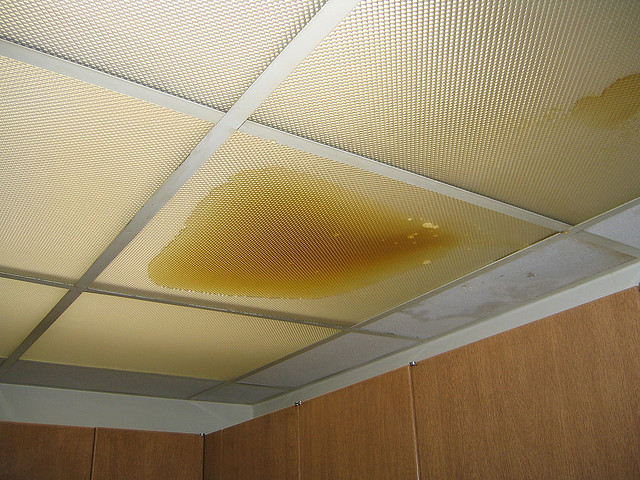What're your insights and beliefs about Leaking water lines?

Early discovery of leaking water lines can alleviate a potential catastrophe. Some little water leakages might not be visible.
1. Take A Look At the Water Meter
Every house has a water meter. Inspecting it is a proven way that aids you discover leaks. For beginners, turn off all the water sources. Make sure no one will purge, use the tap, shower, run the cleaning machine or dishwashing machine. From there, most likely to the meter and watch if it will alter. Given that no one is using it, there must be no activities. That suggests a fast-moving leakage if it relocates. Likewise, if you spot no changes, wait a hr or 2 and also check back again. This suggests you may have a slow leak that might also be below ground.
2. Check Water Consumption
Evaluate your water expenses as well as track your water usage. As the one paying it, you must observe if there are any kind of inconsistencies. If you spot sudden changes, despite your consumption being the same, it implies that you have leaks in your plumbing system. Remember, your water bill ought to fall under the same range every month. A sudden spike in your bill shows a fast-moving leakage.
At the same time, a constant rise each month, despite the exact same routines, shows you have a slow leakage that's additionally gradually intensifying. Call a plumber to extensively inspect your home, particularly if you feel a cozy area on your flooring with piping below.
3. Do a Food Coloring Test
When it comes to water intake, 30% comes from bathrooms. If the color in some way infiltrates your bowl during that time without flushing, there's a leakage between the tank as well as bowl.
4. Asses Outside Lines
Do not forget to inspect your exterior water lines also. Ought to water leak out of the link, you have a loosened rubber gasket. One little leak can lose tons of water as well as spike your water costs.
5. Analyze the situation as well as check
Homeowners ought to make it a routine to examine under the sink counters and also even inside cabinets for any type of bad odor or mold and mildew development. These 2 red flags indicate a leak so timely focus is called for. Doing regular inspections, even bi-annually, can save you from a major issue.
If you know your house is already old, keep a careful eye on your heating systems, pipes, pipelines and so on. Look for stainings as well as deteriorating as the majority of appliances and pipes have a life expectancy. They will certainly additionally normally wear away as a result of damage. If you presume leaking water lines in your plumbing system, don't wait for it to rise. Call a specialist plumber immediately so you do not wind up with a dreadful mess in your house.
Early detection of dripping water lines can alleviate a prospective disaster. Some little water leakages may not be noticeable. Checking it is a surefire means that assists you discover leakages. One small leakage can lose lots of water and increase your water expense.
If you think dripping water lines in your plumbing system, do not wait for it to intensify.
WARNING SIGNS OF WATER LEAKAGE BEHIND THE WALL
PERSISTENT MUSTY ODORS
As water slowly drips from a leaky pipe inside the wall, flooring and sheetrock stay damp and develop an odor similar to wet cardboard. It generates a musty smell that can help you find hidden leaks.
MOLD IN UNUSUAL AREAS
Mold usually grows in wet areas like kitchens, baths and laundry rooms. If you spot the stuff on walls or baseboards in other rooms of the house, it’s a good indicator of undetected water leaks.
STAINS THAT GROW
When mold thrives around a leaky pipe, it sometimes takes hold on the inside surface of the affected wall. A growing stain on otherwise clean sheetrock is often your sign of a hidden plumbing problem.
PEELING OR BUBBLING WALLPAPER / PAINT
This clue is easy to miss in rooms that don’t get much use. When you see wallpaper separating along seams or paint bubbling or flaking off the wall, blame sheetrock that stays wet because of an undetected leak.
BUCKLED CEILINGS AND STAINED FLOORS
If ceilings or floors in bathrooms, kitchens or laundry areas develop structural problems, don’t rule out constant damp inside the walls. Wet sheetrock can affect adjacent framing, flooring and ceilings.
https://www.servicemasterbyzaba.com/blog/how-to-detect-water-leakage-in-walls/

As an avid person who reads about Hacks to detect leaks, I figured sharing that piece of content was a good idea. Enjoyed our blog entry? Please share it. Help someone else locate it. Thanks so much for taking the time to read it.
Comments on “Exactly how to Inspect If Your Home Has a Surprise Leakage”